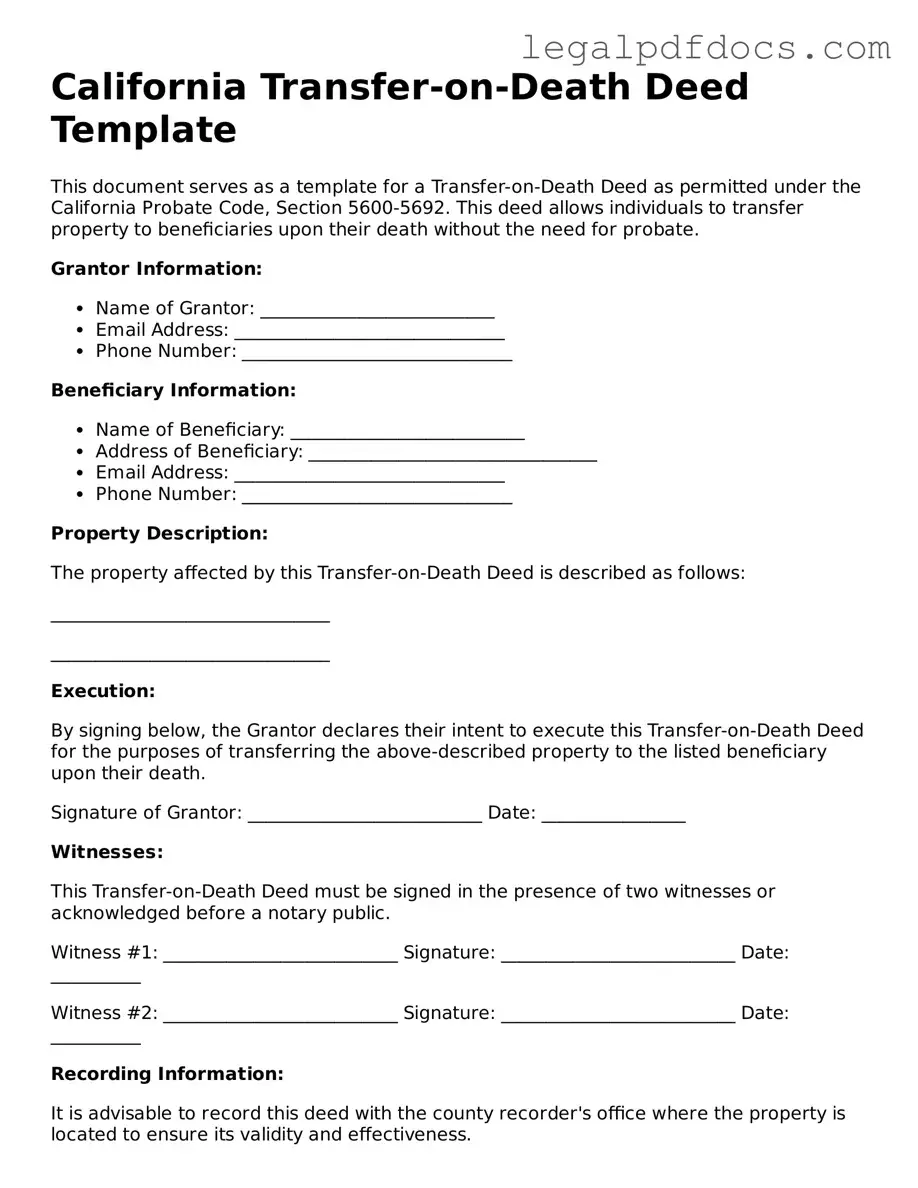Official Transfer-on-Death Deed Form for California
The California Transfer-on-Death Deed form allows property owners to transfer their real estate to designated beneficiaries upon their death, avoiding the probate process. This deed provides a straightforward way to ensure that your property goes directly to your chosen heirs. For more information and to get started, click the button below to fill out the form.
Open Transfer-on-Death Deed Editor Here
